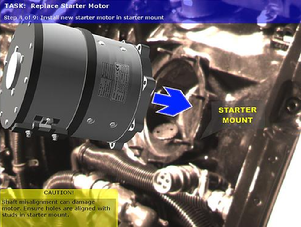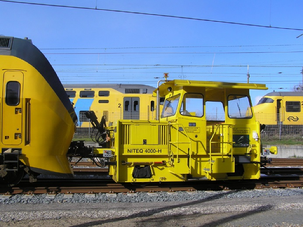The research challenge
The aim of the research activity is to investigate the future applications of Augmented Reality technologies to assist the workers during the maintenance operations in confined working environment, to improve efficiency and to reduce human errors.
|
|
The problem
Not all maintenance & Operations can be performed in spacious environments. For example the maintenance of windmills, locomotives or submarines.
The confined spaces often have adequate size and configuration for worker entry but are not designed for continuous worker occupancy or for complex maintenance operations.
Maintenance personnel play a fundamental role in ensuring the success of reliability of the system, yet despite this, there are numerous human errors in maintenance operations. Although it is nearly impossible to completely eliminate errors, the goal should be to minimize human errors preventing failure with minimum risk of accidents and to improve the efficiency of the operations.
To reduce the risk for the personnel, to improve the Occupational Health and Safety conditions and the efficiency of the system, new technological innovations offer some interesting opportunities.
The opportunity
Augmented Reality (AR) technologies could ease the execution of complex (maintenance) operations and assist workers in meeting their tasks mixing virtual and actual reality by supplementing a view of the real world and providing in real-time quality assurance that increases Safety and mitigates environmental risk as well.
AR supplements a view of the real world with added computer generated sensory inputs in the form of graphics, video, sound and location data. AR could offer to the user new tools to improve efficiency in transferring knowledge for several processes, from multiple sources and in several environments [1]. Moreover, technological developments such as AR generate the need for thorough investigation of human factors. Design, implementation and operation of any new systems in the confined environment will generate a host of new human-related problems and successes that will require fundamental and applied understanding [2].
Description of the activities
The main activities during the project will be:
- The analysis of the state of the art and the most relevant applications of AR in working conditions for maintenance operations;
- The analysis of particular working environment (Diesel Engine Locomotive @ Shunter Company) during the maintenance operations with an health & safety prospective and possible improvements with new technologies;
- The selection of the information to provide to the worker during the operations;
- The collection of additional information through interviews with the personnel for further research studies;
Practical details
The student will be supervised by Dr. ir. Alberto Martinetti (website), assistant professor in the chair of Maintenance Engineering group who is researching the improvement of health & safety conditions in maintenance operations. The student will receive a workplace at the University of Twente (in the Horst building). The student is expected to travel to the companies to visit the working environments to identify possible issues related to the operations.
Other details will be discussed during the application process. This process will start with a first meeting to become acquainted with the supervisor(s) for this project.
MSc thesis project for specialization: Maintenance Engineering and Operations (MEO)
Recommended foreknowledge: Maintenance Engineering & Management (201200146), research methods, statistics
Supervisors: Prof. Dr. ir. Leo van Dongen, Dr. ir. Alberto Martinetti
Client Company: Shunter
Language requirement: English-speaking students
References
[1] M. Hincapie, A. Caponio, H. Rios, E.G. Mendivil, An introduction to Augmented Reality with applications in aeronautical maintenance, 2011,Transparent Optical Networks (ICTON), 13th International Conference on pp. 1.
[2] J. R. Wilson, B. J. Norris, Rail Human Factors: Past, Present and Future, Centre for Rail Human Factors, Institute for Occupational Ergonomics, University of Nottingham, Nottingham, NG7 2RD, UK, 2005.
[3] N.Hall, C. Lowe, R. Hirsch, Human factors considerations for the application of augmented reality in an operational railway environment, 2015, 6th International Conference on Applied Human Factors and Ergonomics (AHFE 2015) and the Affiliated Conferences;


